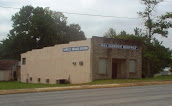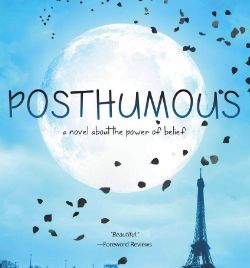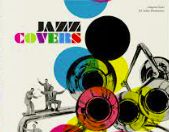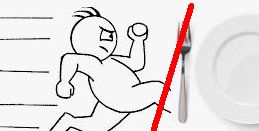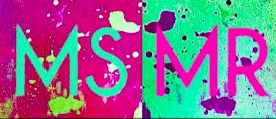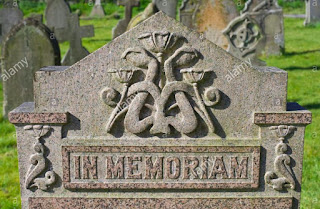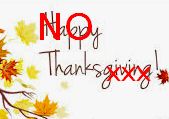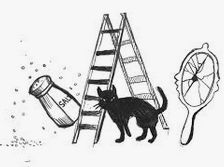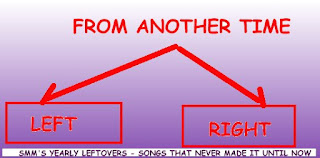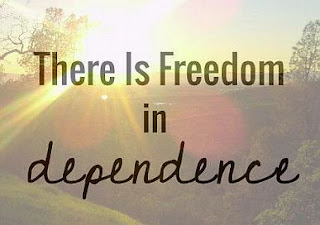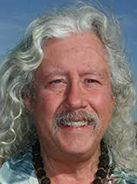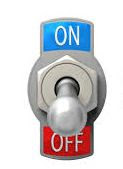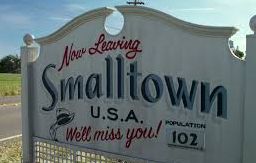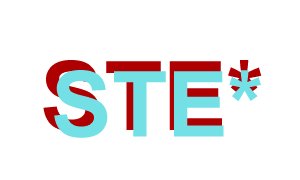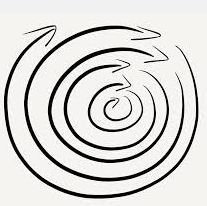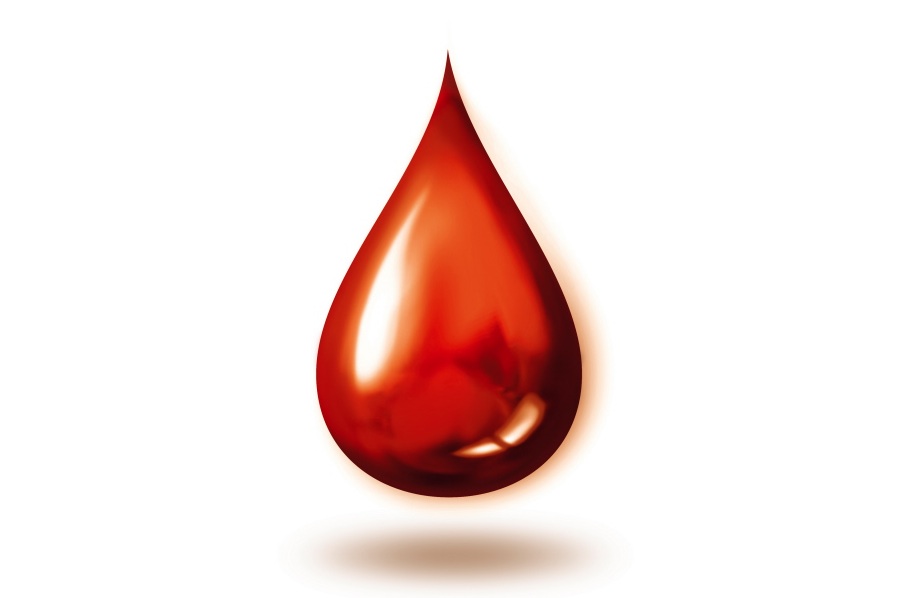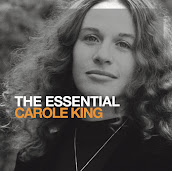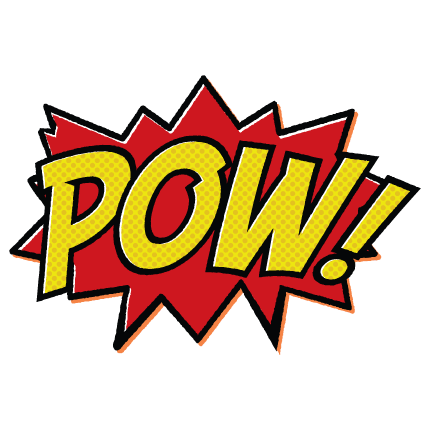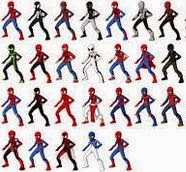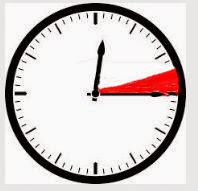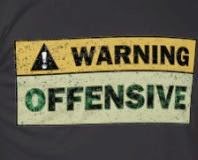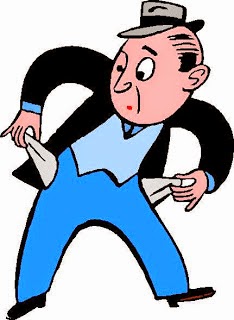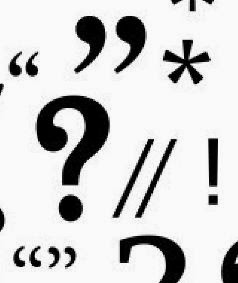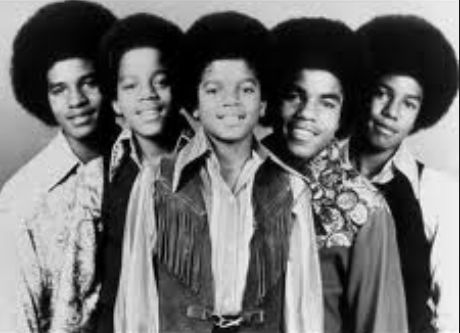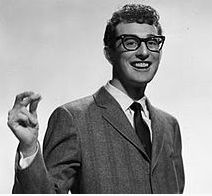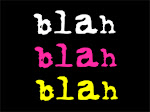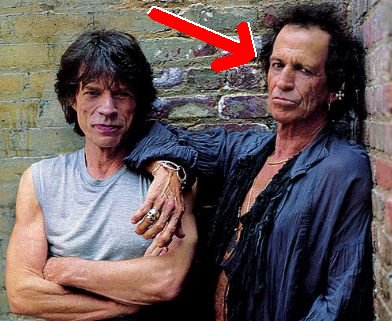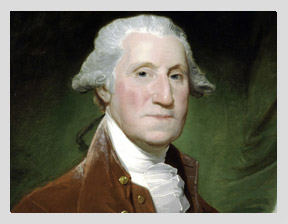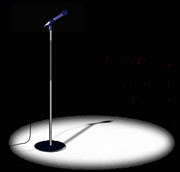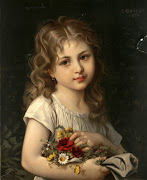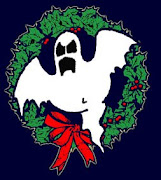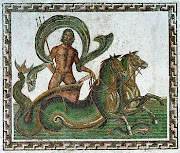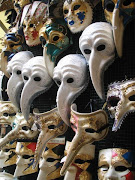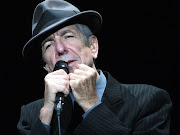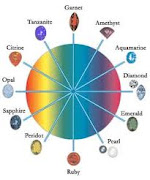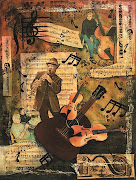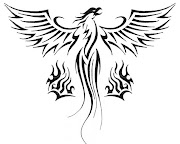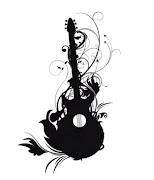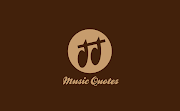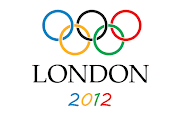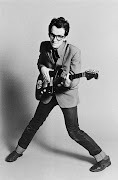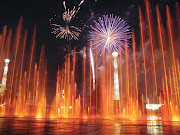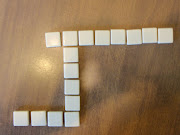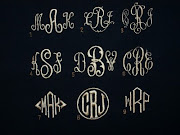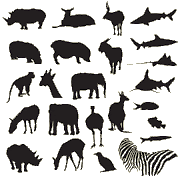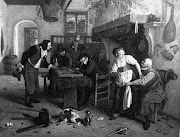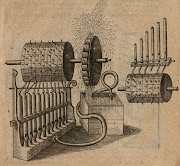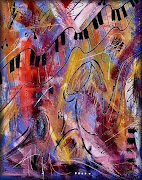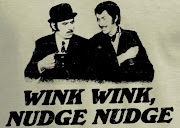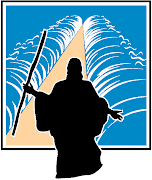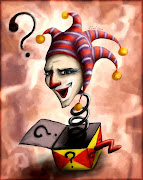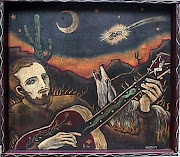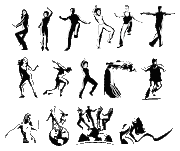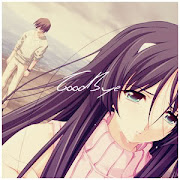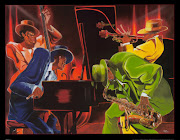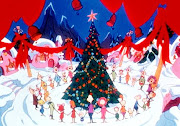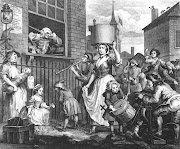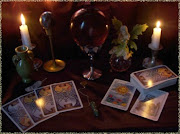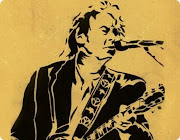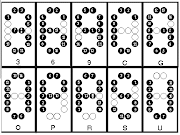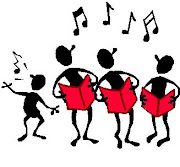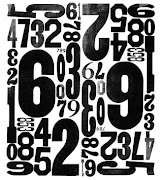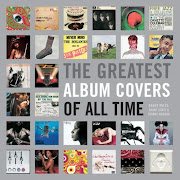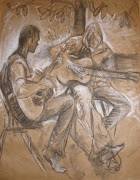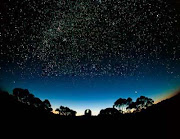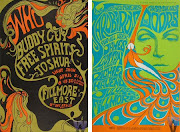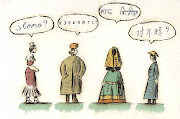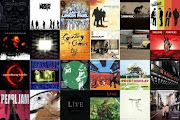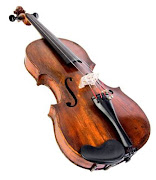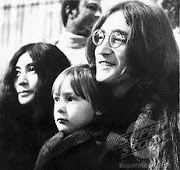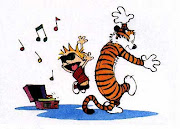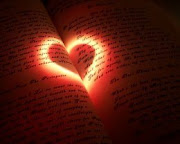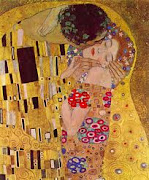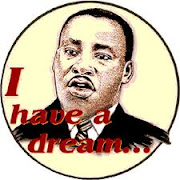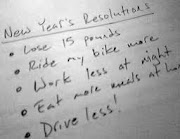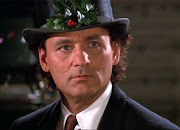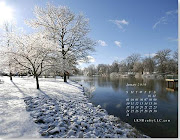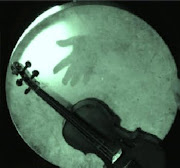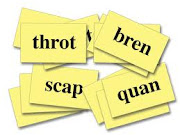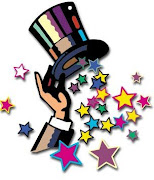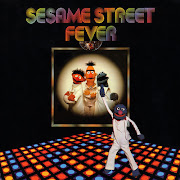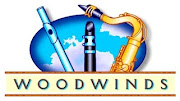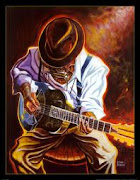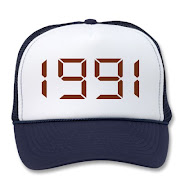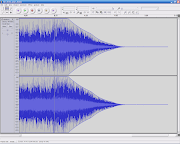Bruce Springsteen: Wild Billy's Circus Story
[purchase]
Even though The Boss has been already featured for the horn topic, I'm going to post up one more...
This was one of the songs that first popped to my brain for this theme. Is it because I'm unfathomably attracted towards the squishy rhumphas from a tuba? Perhaps. Is it because I've always wanted to run away to the circus? Well, who don't? But, it's probably just that it's a great song from a great songwriter.
Word.
Saturday, August 23, 2008
Horns: Wild Billy's Circus Story
Posted by Anonymous at 11:59 PM View Comments
Labels: Bruce Springsteen, Horns
Horns: Jazz Trumpeters
You can't talk "horns" in pop music without mentioning the jazz trumpet player, perhaps the most iconic of all horn blowers.
Here are a four of my favorites from the golden age of jazz:
MILES DAVIS
Miles Davis: 'Round Midnight
[purchase]
Mile Davis is a true jazz giant and the only jazz trumpeter who can stand shoulder to shoulder with Louis Armstrong in the hall of jazz imortals. This recording of Thelonious Monk's 'Round Midnight (with John Coltrane on Tenor Sax) is stunning.
[Read Miles Davis Bio]
FREDDIE HUBBARD
Freddie Hubbard: Delphia
[purchase]
Freddie Hubbard may not be as well known as the other jazz icons featured in this post, but he certainly qualifies as one of the all-time greats. Before his solo career he played on such seminal albums as Eric Dolphy's Out To Lunch and Herbie Hancock's Maiden Voyage. This one comes from my favoite Freddie Hubbard album, Red Clay (1970). It's nice and funky.
[Read Freddie Hubbard Bio]
LEE MORGAN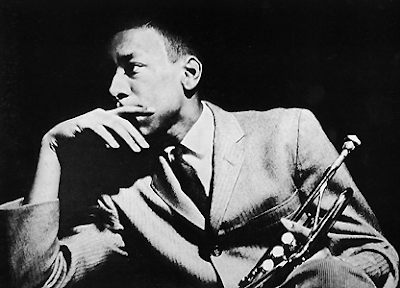
Lee Morgan: Since I Fell For You
[purchase]
Lee Morgan is maybe the most accessible jazz trumpeter for those new the genre. He started playing as a professional while still a teenager. Tragically, Lee Morgan was murdered by his common-law wife at the young age of 33.
[Read Lee Morgan Bio]
CLIFFORD BROWN
Clifford Brown: Joy Spring
[purchase]
Clifford Brown was another brilliant trumpeter who tragically passed away at a young age. He was only 25 years old when killed in a traffic accident. His recorded work is wonderful but who knows what might have been...
[Read Clifford Brown Bio]
Posted by Paul at 11:17 PM View Comments
Labels: Clifford Brown, Freddie Hubbard, Horns, Lee Morgan, Miles Davis
Horns: Jock-A-Mo/Iko Iko
James "Sugar Boy" Crawford: Jock-A-Mo (1953) [purchase]
Larry Williams: Jockamo (aka Iko-Iko) (Late '50s) [purchase]
Dr. John: Iko Iko (1972) [purchase]
Dixie Cups: Iko Iko (1965) [purchase]
I posted the Dr. John version of "Iko Iko" last week in my tribute to Jerry Wexler, but I'm including it here to put the song in context. As it happens, Dr. John tells the "Iko Iko" story in the liner notes to Gumbo, his 1972 album that was produced by the late, great Mr. Wexler. Says Mac:
"The song was written and recorded back in the early 1950s by a New Orleans singer named James Crawford who worked under the name of Sugar Boy & the Cane Cutters. It was recorded in the 1960s by the Dixie Cups for Jerry Leiber & Mike Stoller's Red Bird Records, but the format we're following here is Sugar Boy's original. Also in the group were Professor Longhair on piano, Jake Myles, Big Boy Myles, Irv Bannister on guitar, and Eugene 'Bones' Jones on drums. The group was also known as the Chipaka Shaweez. The song was originally called 'Jock-A-Mo,' and it has a lot of Creole patois in it. Jock-A-Mo means 'jester' in the old myth. It is Mardi Gras music, and the Shaweez was one of many Mardi Gras groups who dressed up in far out Indian costumes and came on as Indian tribes. The tribes used to hang out on Claiborne Avenue and used to get juiced up there getting ready to perform and 'second line' in their own special style during Mardi Gras. That's dead and gone because there's a freeway where those grounds used to be. The tribes were like social clubs who lived all year for Mardi Gras, getting their costumes together. Many of them were musicians, gamblers, hustlers and pimps."James "Sugar Boy" Crawford addressed his original in a 2002 interview with OffBeat Magazine:
How did you construct "Jock-A-Mo"?Finally, I realize that The Dixie Cups version of "Iko Iko" doesn't actually have horns, but I couldn't NOT include it. It might be my favorite version, simply because of its simplicity. According to Dixie Cup, Barbara Hawkins, "We were just clowning around with it during a session using drumsticks on ashtrays. We didn't realize that Jerry (Lieber) and Mike (Stoller) had the tapes running." Leiber and Stoller, producers of their version of "Iko Iko," later overdubbed a bass and drums and released it.
It came from two Indian chants that I put music to. "Iko Iko" was like a victory chant that the Indians would shout. "Jock-A-Mo" was a chant that was called when the Indians went into battle. I just put them together and made a song out of them. Really it was just like "Lawdy Miss Clawdy." That was a phrase everybody in New Orleans used. Lloyd Price just added music to it and it became a hit. I was just trying to write a catchy song. Leonard Chess (president of Chess & Checker Records, then Sugar Boy's label) contacted me and arranged for me to go to Cosimo's (J & M Studio) and record it. That was in (November) 1953.
Listeners wonder what "Jock-A-Mo" means. Some music scholars say it translates in Mardi Gras Indian lingo as "Kiss my ass," and I've read where some think Jock-A-Mo was a court jester. What does it mean?
I really don't know (laughs). It wasn't my idea to call the song "Jock-A-Mo," Leonard Chess did that. If you listen to the song, I'm singing C-H-O-C-K, as in Chockamo. Not J-O-C-K, as in Jock-A-Mo. When Leonard listened to the session in Chicago, he thought I said, "Jock-A-Mo." When I saw the record for the first time I said, "That's not the title. It's 'Chock-A-Mo'."
Posted by LD at 9:21 PM View Comments
Labels: Dr. John, Horns, James "Sugar Boy" Crawford, Larry Williams, The Dixie Cups
Horns: It's All Over Now

Dirty Dozen Brass Band: It's All Over Now
[purchase]
Though the brass band sound of the second line originated in the funeral traditions of New Orleans -- the term refers to the line of musicians who followed the "first line" of mourners in traditional procession -- its association with New Orleans culture has long brought the syncopated beat and marching brass band sound to a vast array of cultural events which profess to celebrate the great city. In turn, as the musical form has found its way from the funeral to the stages and parades, and as generations of musicians have grown up absorbing its distinctive patterns as one of many influences, it has intermingled with other sounds, becoming a rich part of the tapestry of popular music.
The Dirty Dozen Brass Band, which fuses traditional second line cadences and instrumentation with the loose energy and tempo of funk, was one of the first and longest running groups to use this second line style as a platform for greatness beyond the confines of Louisiana, and thus is one of the best known; their sound was forged in the late seventies and early eighties, when an ebb in popularity for brass bands in general left them free to experiment with the form. It's All Over Now is from their Columbia Records debut, the hugely popular Voodoo, which featured horn players Dizzy Gillespie and Branford Marsalis, among others; I heard them perform this song at the New Orleans Jazz and Heritage Festival a few years later, with Dr. John sitting in as special guest, just like in the original version, and it was an incredible party.
Posted by boyhowdy at 4:45 PM View Comments
Labels: Dirty Dozen Brass Band, Horns
Horns: Retro-swing Edition
For no apparent reason, the year 1998 seemed to see the sudden emergence of a number of bands playing what the music press would label swing revival music, or Retro-swing. In fact, these bands had toiled in obscurity for most of the 1990s, but why they all captured the popular imagination in 1998 in particular is a mystery. Soon enough, obscurity would welcome them back. Within a year or two, the style, and the bands that played it, had largely disappeared from view. But for that year or two, the music they made was great.
Brian Setzer Orchestra: You‘re The Boss
[purchase]
Brian Setzer was somewhat of a pioneer of this sound. Going solo in the early 1990s, after the breakup of the Stray Cats, he began experimenting with adding horns to his music almost immediately. By 1998, he had arrived at a hybrid of rockabilly and big band music. Here he slows it down,(and incidentally gives us what I believe is the first muted trumpet we’ve heard this week.)
Squirrel Nut Zippers: Suits Are Picking Up The Bill
[purchase]
Squirrel Nut Zippers are the only other band I’m featuring who had much impact with more than one album. This track comes from their album, Perennial Favorites. The follow-up, Hot, received play on MTV, and gave Hell week its title track.
Big Bad Voodoo Daddy: Minnie The Moocher
[purchase]
To my ear, the horn charts used by Big Bad Voodoo Daddy make their music the closest to the big band sound of any of the bands I’m featuring here. “Minnie the Moocher” is a classic tune from the big band era.
Cherry Poppin‘ Daddies: Zoot Suit Riot
[purchase]
Finally, I couldn’t leave this topic without posting “Zoot Suit Riot” by Cherry Poppin’ Daddies. This song knocked me out when I first heard it, and it still does. I don’t have much else to say about it. Just listen.
Posted by Darius at 10:22 AM View Comments
Labels: Big Bad Voodoo Daddy, Brian Setzer, Cherry Poppin' Daddies, Horns, squirrel nut zippers
Friday, August 22, 2008
Horns: Dance The Night Away

The Mavericks: Dance The Night Away
[purchase]
Floridian alt-country band The Mavericks rose quickly in the nineties, recording six albums, charting 14 singles, and winning several Country Music Awards and a Grammy. Their reign, however, was surprisingly short-lived: though founding singer-songwriter Raul Malo's solo output remains heavily blogged and in-demand, much of the end-run output from the Mavericks was weak; they broke up in 2003 after their last two albums failed to chart in the US.
The Mavericks are well known to me as a cover blogger; in fact, the success and failure of their many cover songs provides a fairly clear exploration of their rise and fall. Their early take on Hank Williams classic Hey Good Looking, on sophomore outing From Hell To Paradise, helped sustain the buzz from their first, self-titled album, bringing their early work to light. Later that decade, their cowboy-paced big band cover of Blue Moon, which appeared on the Apollo 13 soundtrack, was a relatively successful single in North America.
The Cat Stevens cover on their 1999 greatest hits compilation would eventually chart at #42, but the writing was on the wall. Their cover of Hot Burrito #1 was a decent if unexceptional addition to Gram Parsons tribute Return of the Grievous Angel, but didn't stand out as anything special. And soon would come sappy, too-jazzy covers of CCR classic Down on the Corner from the King of the Hill TV show, and a seriously disappointing big-band version of Elvis standard Are You Lonesome Tonight, which appeared on the soundtrack to Babe: Pig in the City, as harbingers of the end. Meanwhile, Raul Malo's decent cover of Springsteen's Downbound Train, on 2000 tribute Badlands, anticipated both the band's dissolution, and Malo's successful solo career.
Happily, their 1998 original single Dance the Night Away remains a stellar stand-out, cheerful and bright-sounding, reminiscent of their early work fusing southern swing, swamp rock, country, rockabilly, and big band arrangements, easily worth placement on the always-excellent Oxford American Southern Sampler series from that year. Malo's work as frontman always reminds me of Roy Orbison in his later, high-country rock days, which isn't a bad thing at all. Thanks to JerseyCynic for reminding me that I had this truly majestic dance number on tap for this week's theme. Meanwhile, here's one for die-hard Elvis fans only:
The Mavericks: Are You Lonesome Tonight
[purchase the Babe soundtrack!]
Posted by boyhowdy at 4:31 PM View Comments
Labels: Horns, The Mavericks
Horns: Gill Landry

Gill Landry - Lonliness
[purchase]
I originally described Gill Landry's 2007 effort, The Ballad of Lawless Soirez, as "the soundtrack for a lost Quentin Tarantino film" and "a mixture old country blues, jazz and songster music of the 20's and 30's perfect for a quite night with a warm glass of whiskey and a little sweat."
He's currently on tour with Old Crow Medicine show.
Posted by Autopsy IV at 1:21 PM View Comments
Labels: Gill Landry, Horns
Horns: Blues Edition
In the 1930s, at the height of the big band era, there were (especially black) bands that featured blues singers. This meeting of blues and swing was called “rhythm and blues”, and billboard’s first R&B charts were for this music. Later this style became known as “jump blues”.
During and after World War II, two things happened that changed the sound of the blues: one, there was a mass migration of workers to the industrialized northern states, which resulted in acoustic blues players from the south plugging in and creating electric blues; and two, wartime shortages made it prohibitively expensive for large swing bands to tour, and the bands responded by shrinking. Over time, the electric blues and jump blues styles collided, and there began to be bands with drums, electric bass, maybe piano, electric guitar, and two or three horns. At this point you get what we think of today as R&B, and along the way you also get some great blues.
Wynonie Harris: Bloodshot Eyes
[purchase]
Wynonie Harris began his career as one of those big band singers, but found his greatest success after the war as a jump blues singer. “Bloodshot Eyes” was not one of his biggest hits, but it has endured. The song has been covered by everyone from Asleep at the Wheel to Pat Benetar.
Willie Mabon: Seventh Son
[purchase]
Willie Mabon migrated from Memphis to Chicago during the war. There he met Willie Dixon, who wrote “Seventh Son” for him. This is a boasting song, which is thematically related to the better known “Hochie Coochie Man.”
Roomful Of Blues: Walkin' Slow Behind You
[purchase]
Roomful of Blues are a band that sought to bring back the jump blues style long before the recent wave of neo-swing bands. (I don’t mean to knock the neo-swing bands. Look for a post on these bands from me later.) Roomful of Blues did their best work with their original lineup, including guitarist Duke Robilard; his solo work is also well worth seeking out.
B B King: Caldonia
[purchase]
Finally, no presentation of horns in blues would be complete without B B King. “Caldonia” is a classic jump blues tune that many people had recorded before, but B B King changed the balance of horns and guitar, and defined the sound of horns in blues for those who have come after him.
Posted by Darius at 12:01 PM View Comments
Labels: B B King, Horns, Roomful of Blues, Willie Mabon, Wynonie Harris
Horns: Cure For Pain
Morphine: Cure For Pain
[purchase]
I know that saxophones are a reed instrument, so are not a horn, by definition.
I know that SMM is a malleable invention, allowing bendings (and shatterings) of rules.
So there.
Posted by Anonymous at 1:24 AM View Comments
Thursday, August 21, 2008
Horns: Two Cow Garage

Two Cow Garage - Mediocre
[purchase]
Well, I guess since the owner's of The Star Maker Machine went and made me an "official" contributor I could make an effort to contribute 2 posts to each theme. I wish I could do more but I have a hard enough time posting once a day to ninebullets.net. This is a particularly difficult week cause, well, to be honest, I just don't listen to that much shit with horns. Fiddles, banjos, harmonicas, even freaking washboards and I could post 20 songs without even having to think about it. But horns? I've been marinating on it and I've found a few songs. I'm gonna try to get to them all and I am gonna start with one from one of my very favorite bands, Two Cow Garage.
Two Cow Garage is a band I can root for. Four completely awesome guys who write completely awesome rock music and play it with everything in them, regardless of the size of the crowd behind the monitors. If you can’t get behind that, then I gotta admit, I don't really like you. This song is the Two Cow version of a balld. It comes from their 2007 effort, "III" which was released on Suburban Home Records. Their 4th Album, titled "Speaking in Cursive", is scheduled to be released this October.
Posted by Autopsy IV at 3:45 PM View Comments
Labels: Horns, Two Cow Garage
Horns: LA-Memphis-Tyler
Dale Hawkins: LA-Memphis-Tyler
[purchase]
Dale Hawkins hit it big in '59 with Suzie Q, but created his roots rock masterpiece 10 years later. Recorded in three cities, the album title pays them tribute: "LA, Memphis & Tyler, Texas." It was finally put out on CD two years ago and it's a real cooker, featuring two tracks penned by fellow swamp rocker Bobby Charles.
A few cuts have killer horn charts, the instrumental Back Street, Little Rain Cloud, and the title track above. I wonder in which town they were recorded.
Posted by Brendan at 3:15 PM View Comments
Labels: Dale Hawkins, Horns
Horns: Jump in the Line
Harry Belafonte: Jump in the Line
[purchase]
Like my first post this week, this song is just pure joy. It's one of the first songs I reach for when I just want to hear something to make me happy.
Posted by Scott at 10:03 AM View Comments
Labels: Harry Belafonte, Horns
Horns: Oo La La La
Cheap Trick: Oo La La La
[purchase]
So, whaddya do when your career is on the slide, your bass player quits, and you've just blown two great songs on a movie soundtrack? (A great movie soundtrack, but still...)
Well, you could have your iconic lead guitarist play the bass parts on the next album, hire a new guy to tour with you (but cleverly obscure his face on the album cover, hoping the casual fan doesn't notice), and press on...
Ah, what the heck. In addition to all that, replace the guitar on one of those new album tracks with a horn section, but don't let them sound like a horn section... have them follow the guide guitar track to the note, and mix it just like a guitar, too.
Yeah, that's what you do.
(Realizing that snark doesn't always translate to the internets well, let me state - for the record - that Cheap Trick is my all-time favorite rock band - not counting The Beatles, of course - and even their 'low points' are some of the best rock and roll I've ever enjoyed.)
Posted by Anonymous at 1:02 AM View Comments
Labels: cheap trick, Horns
Wednesday, August 20, 2008
Horns: Cobwebs And Strange

The Who: Cobwebs And Strange
[purchase]
If you're looking for some horns, here's John Entwistle on trumpet, Roger Daltrey on trombone, Pete Townshend on penny-whistle, and Keith Moon on drums. They're performing one of Keith Moon's rare contributions to the band's oeuvre.
Posted by Paul at 11:17 PM View Comments
Horns: Two Tributes to Trumpeters

David Wilcox: Chet Baker's Swan Song
[purchase]
Sheryl Crown: We Do What We Can
[purchase]
Two smooth, moody bittersweet ballads of talent lost to the ages -- one nominally folk, the other pop -- which adopt jazz trope and trumpet as a mechanism for paying tribute to beloved jazz trumpet players.
David Wilcox' first person paean to Chet Baker, who struggled with drug addiction for much of his career, paints him as helpless and desperate; the sweet jazzfolk approach effectively evokes both Chet's typically sultry sound and the languid, surface-smooth heroin dreams which many believe prompted him to end his life by leaping off the balcony of a Amsterdam hotel room.
Meanwhile, popster Sheryl Crow dwells in the memory of her father as a frustrated jazzman and lawyer; the faint, high trumpet notes which underscore the arrangement are a subtle wail of lost promise, but the way they waft through the song like the tendrils of memory is perfect for the neo-noir subject treatment.
Interestingly, in addition to similarities of trumpet, trumpeter, tone and tempo, both of these songs are their respective albums' penultimate track; in each case, they are followed by a simple, equally slow song of hope and faith. Coincidence?
Posted by boyhowdy at 7:13 PM View Comments
Labels: David Wilcox, Horns, Sheryl Crow
Horns: Stairway To Heaven
Considering this is a 1988 reggae version of one of the most overplayed songs of all time, this must be my most uncharacteristic post ever. But for this week's theme I couldn't resist sharing Zappa's amazing 5-piece horn recreation of the famous guitar solo at the end of Stairway.
From the self-destructive touring band behind The Best Band You Never Heard In Your Life [purchase], featuring the Fowler Brothers on horns (among others) and Ike Willis on vocals.
Frank Zappa: Stairway To Heaven
Posted by Brendan at 5:55 PM View Comments
Labels: Frank Zappa, Horns
Horns: An Alternate Viewpoint

I like to try and approach things from a slightly different angle. I think from my few contributions on this site you can tell one of my favorite things to do is research a song and tell it's story instead of just talking about the song. When I saw this weeks theme I almost just skipped it. Nothing jumped right to mind. Then, after marinating on it for a couple of days the fog cleared and I realized what this theme needed...an alternate point of view.
SONG
Pronunciation: \ˈsȯŋ\ Function: noun
1: a short musical composition of words and music b: a collection of such compositions
So...you have a theme of horns, a music blog and football season starting next week. Why rack my brain looking for some Motown classic featuring horns? There is an element of music out there where the horn, instead of being an accent piece or a bit player, is the main man....the electric guitar if you will....the NCAA Marching Band.
So, in honor of the NCAA and NFL football seasons being right around the corner I am featuring the greatest college football fight song ever (granted, i may be a little biased) and some other's that I like. I hope y'all enjoy it.
The Best:
Florida State Seminole Marching Chiefs - War Chant
The Rest:
The Miami Hurricanes Fight Song
The Notre Dame Fighting Irish Fight Song
Alabama's Roll Tide Roll
Tennessee's Rocky Top
Michigan's Hail To The Victors
The NFL's Theme Song
[purchase]
(from Autopsy IV of ninebullets.net)
Posted by Autopsy IV at 1:10 PM View Comments
Labels: College, Florida State Seminoles, Football, Horns, NFL
Horns: Most Likely You Go Your Way
Bob Dylan: Most Likely You Go Your Way (And I’ll Go Mine)
[purchase]
In addition to being one of the many superbly verbose Dylan titles, “Most Likely You Go Your Way” is just jazzy. Dylan comes screamin’ in on the harp – backed up conservatively by a single trumpet – maybe… no horn expert. The horn is faded out of the mix almost entirely through the middle but quietly returns to help strut the song out alongside Dylan and his harmonica. As the lead off track on one of the first ever ‘Side 3s’ in Rock history, the song used the barnyard tempo to reel the listener back in for the second half of the seminal Blond on Blonde.
In 2007, English mixing phenom Mark Ronson earned unprecedented permission from Dylan to work-over the song. You may know Mark from his work as producer on Amy Winehouse’s Back To Black – and hey, he made her sound sober for an entire album. Ronson’s ‘cover’ interestingly enough does not take away from the song one bit. He found the original intention for the song that was hiding somewhere in the back of the mix with that lone trumpet, and simply blew it up. Ronson has been known to liberally apply horn sections to his music – and here he does not disappoint.
Mark Ronson: Most Likely You Go Your Way (And I’ll Go Mine) - Remix
[purchase]
Check out Mark’s elaborate video for the remix (YouTube) – with a faceless, I’m Not There-type look at the various stages of Dylan.
Posted by Payton at 1:06 PM View Comments
Labels: Bob Dylan, Horns, Mark Ronson
Horns: Try A Little Tenderness

Otis Redding: Try A Little Tenderness
[purchase]
This song begins with one of my favorite horn parts in all of pop music. Then, as the song slowly builds up into the powerhouse that it becomes, the horns both support and compliment Otis Redding's vocals just right.
Posted by Paul at 11:58 AM View Comments
Labels: Horns, Otis Redding
Horns: The Dry Cleaner From Des Moines
Back in Cars week, in my Cadillac post, I mentioned that Joni Mitchell had taken a dive deep into the heart of jazz. Now, It's time to tell that story.
Joni Mitchell: The Dry Cleaner From Des Moines
[purchase]
In the early part of her career, Joni Mitchell's music went from spare arrangements for voice and acoustic guitar or piano, to fuller arrangements. Throughout, she used harmonies that no one who liked folk music or pop had ever heard before. Many an amateur guitar player came close, when trying to play her songs, to giving up the instrument in despair, before they realized that Joni got those sounds by actually changing the tuning of her guitar. So it shouldn't have surprised anyone when David Crosby suggested that Joni try working with jazz musicians. After summing up the first part of her career with a live album, (Miles of Aisles), Joni gave it a shot.
Now I would guess that neither Crosby nor Mitchell knew any straight-ahead jazz players at that point, so her first experiments were done with Tom Scott and the LA Express. This was a group of LA studio musicians with jazz training who were paying the bills by playing on pop records; as a band, they were playing the kind of fusion jazz that I have described elsewhere as musical wallpaper. In combination with Joni Mitchell, however, the created two of her finest albums, Court and Spark and The Hissing of Summer Lawns.
Joni Mitchell has always had a great musical curiosity, and as she continued her exploration of jazz, she began to meet more musicians who could help point the way. From the sound of the album, I imagine that during the recording of Hejira, someone said to her, "Joni, if you want the bass to sound like Jaco Pastorius, why not get Jaco Pastorius?" And she did. By all accounts, they became great friends, and Pastorius was still around for the recording of Don Juan's Reckless Daughter.
So that was where things stood when a phone call came from out of the blue. Jazz legend Charles Mingus was dying, and he wanted Joni Mitchell to help him record his last album. After picking herself up from the floor, she agreed, and the resulting album was Mingus. Mitchell and Mingus worked against the clock to finish the album, but Charles Mingus died before it could be released. He did, however, get to hear demos of all the songs. After that experience, Mitchell apparently felt that she had gone as far as she could go with jazz. She summed up that part of her career with a live album, (Shadows and Light), and moved on. Sadly Jaco Pastorius also died around that same time.
"The Dry Cleaner From Des Moines" begins with a blast from the horn section, who then disappear. But fear not, they do reappear later, and the song does not work without them. There is also a solo soprano sax part, played by Wayne Shorter. Wayne Shorter and Jaco Pastorius had worked together before, in a band you may have heard of called Weather Report. I have included their best known song here as a bonus track.
Weather Report: Birdland
[purchase]
Submitted by Darius
Posted by Anonymous at 1:45 AM View Comments
Labels: Horns, joni mitchell, weather report
Tuesday, August 19, 2008
Horns: The Long Tomorrow
Tied & Tickled Trio: The Long Tomorrow
[purchase]
In the late 90s, to talk about the many bands operating in Chicago was really to talk about maybe ten guys playing in multiple iterations. Tortoise was the central axis, with the Sea & Cake, Isotope 217, Chicago Underground Duo, Brokeback, Papa M, and countless others all circling the beast like little parasites. Most of these incarnations were releasing their records on the Thrill Jockey label.
Over in Munich (or thereabouts), the exact same thing was happening in parallel. Substitute the Notwist for Tortoise and ancillary moons Ms. John Soda, Console, Lali Puna, Schneider TM, and the Tied & Tickled Trio. As with the Chicago collective, most of these bands all released records through one label, Morr Music. Brothers Micha and Markus Acher take time from the electronica/rock fusing Notwist to contribute to the electronica/jazz fusing Trio—which by the way is actually a septet, including one member who improvises electronics right alongside the horn players.
"The Long Tomorrow" is the opening track from the 2003 album (and career highlight) Observing Systems. This album is the group's best synthesis of moody electronics within a fully functioning jazz ensemble. 1999's EA1 EA2 and 2001's Electric Avenue Tapes are also great albums, though not as fully realized as this album; last year's Aelita saw the group inexplicably abandon the horn section and move more toward electronica, dub, and ambient, to middling success.
Posted by Scott at 9:49 PM View Comments
Labels: Horns, Tied and Tickled Trio
Horns: Emerald City Hall
Mandible: Emerald City Hall [purchase]
Figuring that most people would be posting jazz, jazz samples, and jazz-influenced rock, I wanted to go in another direction. Mandible uses the trumpet, not for improvisational exhibition, but as a framing device for their challenging, spastic, but ultimately rewarding cartoon music. And I say "cartoon music" in the highest, Raymond Scott/Carl Stalling sense of the phrase. This is a band that isn't happy unless a song has at least 17 changes. OK, that's a slight exaggeration. But, if you're like me and you've ever wondered what it would sound like if They Might Be Giants covered Dark Side Of The Moon, now you have your answer. And like TMBG, Mandible is one of those rare bands that creates compositionally challenging music, yet maintains a total command of their humor sensors. Funny, off-beat, yet ultimately rewarding, (Here Come The) Mandible is the Raising Arizona of albums.
Posted by LD at 12:12 PM View Comments
Horns: Luchini AKA This Is It
Camp Lo: Luchini AKA This Is It
[purchase]
Who'd have thought that Horn Week would turn SMM into a hip hop blog? This is the third post in two days to cover a hip hop track. Though, considering we collectively don't seem to own anything released after 1997, I have a feeling the trend won't hold.
Anyway, Camp Lo's Uptown Saturday Night is a (lost?) classic of the genre. Though the duo of Sonny Cheeba and Geechi Suede are still together, they never made another real dent into the mainstream after this single. But don't let that stop you from picking up the album if you ever see it. The whole thing is solid from end to end, heavily influenced by 60s and 70s funk and soul (as opposed to P-Funk, which was seeping into so much hip hop at the time), with a heavy dose of blaxploitation. I love the way the horns kick with the bass drum on this track. And I love both rappers' flow. Cheeba is cartoonishly cool while Suede is legitimately so (a template for Outkast?). Listen to the way Suede's flow just completely transforms mid-verse around the two minute mark.
Posted by Scott at 10:23 AM View Comments
Horns: I've Grown Accustomed To Her Face
Chet Baker: I've Grown Accustomed To Her Face
I'm not going to offer anything new from when I first posted this.It's out of print* and full of scratchy-ness... If you can't dig that, mama, then you're outta my mind. Almost as much as Chet was out of his, back then.
But, you're still beautiful. Almost as much as Chet was...
...back then.
*Darius found it in print: See comments for a purchase link.
Posted by Anonymous at 2:10 AM View Comments
Labels: chet baker, Horns
Horns: Spinning Wheel

Blood, Sweat & Tears: Spinning Wheel
[purchase]
Yet another Grammy-winning Jazz-influenced hybrid from NYC, this time from a band which fused pop, rock, blues and jazz instrumentation and style to form Jazz-Rock (which Wikipedia redirects as a synonym for Jazz Fusion, though I would argue that Jazz-Rock is much more pop- and blues oriented).
I have fond memories of discovering this 1969 sophomore self-titled release just to the left of the folk in my father's record collection one evening in the mid eighties, and subsequently staying up all night spinning and flipping it again and again, straining to catch every flourish and nuance, marveling at the interplay of ragged bluesrock vocals and tight horn arrangements. The album fully deserved its 1970 Grammy for Record of the Year, and the song easily merits its own Grammy for best instrumental arrangement accompanying a vocalist; though in a post-Chicago world it can be too-easily lumped together with the cheese, newcomers willing to listen deeply will find the sound as fresh and authentic as it once was, I think.
The horns here would become so much a part of the song that it would seem impossible to cover it without including them; though Vegas legend Jack Jones heads for a fusion lounge singer sound, and Shirley Bassey funks the place up with bass and blueswail, note how in each cover, the horns embed themselves in the arrangement just about where they were for the original.
Jack Jones: Spinning Wheel [purchase]
Shirley Bassey: Spinning Wheel [purchase]
Posted by boyhowdy at 1:41 AM View Comments
Labels: Blood Sweat and Tears, Horns, Jack Jones, Shirley Bassey
Horns: Rebirth of Slick (Cool Like Dat)

Digable Planets: Rebirth of Slick (Cool Like Dat)
[purchase]
Matt broke the Hip Hop barrier before I could get to this track, and it's hard to top any song that includes both Michael Franti and William S. Burroughs, so I'll keep it short: though this first single from NYC Jazz / Hip Hop fusion trio Digable Planets uses horns only for a particular post-verse emphasis on the short titular chorus, without 'em, this would be a b-side on an album which, itself, marked the height of popularity for both this unusual hybrid form and the artists that created it. Instead, the blare of the horns frames the sparse, broken beat and otherwise-silence which accompanies the dreamy, thoughtful, intelligent lyrics, making a smooth, catchy post-street neo-Beatnik jazzpoetry which not only won a Grammy in 1993 for Best Rap Performance by a Duo or Group, but lingered in this adolescent's turntable for months.
Sadly, however, it's not hard to see why Digable Planets' second album was a flop: the rest of Reachin' (A New Refutation of Time and Space) pretty much sounds just like this track, so who needed more than one album of it? As a novelty, it is powerful and refreshing, well worth having; in the long run, diversification probably would have made a difference. Today, though all involved have under-the-radar solo careers, notably, it is turntablist, soundman, producer and remixer King Britt, nee Silkworm, who often plays with ?uestlove Thompson of The Roots, who is best known, rather than the three vocalists Butterfly, Doodlebug, and Ladybug Mecca.
Posted by boyhowdy at 1:06 AM View Comments
Labels: Digable Planets, Horns
Monday, August 18, 2008
Horns: Louis Armstrong
I think what gets lost in the fog of time is the full picture of Louis Armstrong. Most people today know him as the old d00d that sang Hello, Dolly and Wonderful World, wiping his brow between the occasional toots on his horn. Matt Glaser nailed Armstrong and his contributions during a 1998 interview for Ken Burns' Jazz:
Why is it that we are still talking about Louis Armstrong, almost 100 years after his birth?
Oh, man. I think the true, profoundly intellectual contribution of Louis Armstrong has not been fully understood by the general public. Here's this wonderful, warm, avuncular guy who's known to the people around the world as the guy who sang, "Hello, Dolly," smiling and laughing. But it reminds of a story of a, Freeman Dyson said about the physicist Richard Fineman. He said when he first met him he thought he was half genius and half buffoon. But after knowing him for a long time he realized he was all genius and all buffoon. And people, people expect art to be serious and, and dry and something, whereas Louis' art is as deep and as profound as any art that's ever been on Earth. And yet it's, it's an art of joy and, human experience embodied. So, and yet I think at the same time Louis was just part of the intellectual trend that was going on in other, in the arts and in the sciences. He was the first person to embody abstraction musically. Other people used abstraction in music, but over time. Composers would sit down and take an idea and toy with it over time, but Louis could spontaneously take a melody and abstract it, that is remove all the unessentials from this melody and be left with just this pure vision of what the melody could be. And this is of course an idea that has been the grist for Jazz musicians since that, since that time. And it can all be traced back to Louis, this idea of abstracting a melody.
You had a quote about they say that all philosophy...
Oh, yeah. I think it was Alfred North Whitehead, a philosopher, said that all of Western philosophy can be reduced to commentary on Plato. You can say that all of western philosophy is merely commentary on Plato. Well it's absolutely true that all of Jazz is commentary on Louie Armstrong. And you can show specific examples of this when you listen to the Miles Davis of the "Kind of Blue" album, the way he plays on "So What." Ba, ba, boo, boom, boo, boo, bee, bum, bee, bum, bum. Boo, boo... a simple melody that a, an initial motif is developed over time. That idea comes from Louis, and Miles himself said, "You cannot play anything on a trumpet that Louie Armstrong, Louie Armstrong did not play already." If you listen to his, the, the most profound advances that Louie Armstrong made were in the area of rhythm. Jazz is the ultimate temporal artform. Music is a temporal artform, but Jazz is ultimately the temporal artform. And it's about the human experience of time. How is time embodied? So you listen to Louis playing a quarter note, and suddenly your whole experience of that day has changed. You hear him playing this one quarter note, and time is not moving along in the way that it normally moves along. And if you listen to modern Jazz, it's taken sixty years for Louis' idea of sophisticated polyrhythm to meld down into the Jazz rhythm section, that is into the drums and the bass. When Louis was playing, he sounded like he came from Mars. He's playing the most sophisticated things imaginable and the other guys are playing very, what sounds now very dated. Louis' music never sounds dated, but the bands that he played with often did. But now sixty years later you have bands that are finally absorbed his messages, his ideas rhythmically. And that's still, this is still what Jazz musicians are working on, sixty years after his main recordings.
That's terrific. Can you imagine a moment in Denmark — what's this story?
Well, all of us have had these epochal moments where you, you see your, you see something or you hear some music and your life is changed forever. For me, it was seeing a film on television of Louie Armstrong playing in Copenhagen, Denmark in 1933, playing the tune "Dinah." He is absolutely on fire, unbelievable. And, and his solo on "Dinah" is a, is a perfect example of this abstraction. And it occurred to me that it was possible and no one will tell me otherwise, it's a fantasy that I treasure, that Werner Hizenberg could have been in the audience in Copenhagen in 1933. He lived in Copenhagen at that time, and in 1933 he won the Nobel prize for his work on quantum mechanics. And I've always had this fantasy that he and a couple of other scientists after a hard day of work on quantum mechanics went out that night, heard Louie Armstrong, and were completely blown away, and realized that in a completely different idiom, he embodied everything that they were working on. Profound new ideas about time, space and human, the human place in the cosmos. And they saw Louis playing and they thought, "Wow, that's it." In a language utterly different than their scientific language. And yet it's the same... a modern response, this is the story of modernism.
If you look at these paintings by Mondrian, when he started out painting a bridge when he was a young man, it looked like a bridge. You see it, it's a bridge. Then gradually over time, he would remove elements from that picture of the bridge, remove more elements, boil these elements down until,until there was just a gesture of a bridge, until the 1930's you would just see two lines in space. And, and Louis I'm sure was not thinking, "Oh, my God, I've got to do something just like Mondrian on the trumpet." But innately he was. Somehow these ideas were in the cosmos, and I personally would rather hear Louie communicate these ideas than anybody else, either Hizenberg or Mondrian or anybody. Because for him, these ideas are embodied, experienced and can be communicated in an embodied and experiential kind of way.
I wanna just talk a little bit about Einstein, because I really think the greatest parallel between Armstrong is with Louis, is, is with Albert Einstein. First of all, there are these obvious parallels that both of them were founders of new ways of looking at the world. Louis Armstrong founded Jazz phrasing, a new way of experiencing time. And, and Albert Einstein founded the theory of relativity. They were thought of by the general public in similar kinds of ways. They were avuncular, warm people who were known all over the world. I mean, Albert Einstein was known by everyone, even people who had no idea of what his theories were about. And they generally liked him, they liked his vibe. He was a warm, kind of strange-looking kind of guy who smiled alot. Louis Armstrong was known all over the world by people who had no real interest in Jazz, as this incredibly warm communicator of joy, even if they didn't know exactly why he should be so famous. So on, on that obvious level there's some relationship to them. But it occurred to me that there are a number of components that people commonly understand to be part of the theory of relativity. And one of those is that as you move closer to the speed of light, time slows down. So it occurred to me once while listening to a Louie Armstrong solo that he embodied this aspect of, of the theory of relativity. The faster the music would go, the more Louie sounded utterly at ease and utter, utterly relaxed. And you can actually do an experiment, what Einstein called "gedanken experiments," thought experiments. If you imagine all of the music removed except Louie's playing. And when you're left with just Louie's playing, what you have is freedom and eternity and rest. It's a paradox of music that music is both about being and becoming and music is the ultimate art of change and becoming. And yet at the same time, Louis' playing embodied being, just eternity, there is no time. And, and the faster the music went, the more Louis sounded relaxed.
He had slowed down time...
He had slowed, I think so. I really think so.
Somehow in his gut he was able to make time stop. And I think that's true for all great musicians, but no one more so than Louis Armstrong. That the faster the music went, the more it sounded like he was utterly at peace and utterly at ease. It's an extraordinary thing, really extraordinary.
Do you feel there's a connection between Einstein and Armstrong?
I've always felt that there's this connection between Louis Armstrong and Albert Einstein. And there's a connection between them on a variety of levels. They both initiated radical changes in human thought in their particular fields. Armstrong in music and Einstein in physics. Also paradoxically enough, they both, although they started these revolutionary schools, they both were kind of left behind by the, by their progeny. That is, Einstein never really got on board with quantum mechanics. He would say to Nils Bohr, "I refuse to believe that God plays dice with the universe." And Nils Bohr would say, "Stop telling God what to do." And Louis Armstrong, who really gave birth to Bebop, essentially in his solo on "Ding Dong Daddy from Dumas," he plays da, da, doop, da, doop, da, dap, do, dat, salt peanuts, which became the theme of Dizzy Gillespie. But he never really dug Bebop, and the Beboppers never realized their incredible debt to Armstrong.
Was there another scientific thing you wanted to throw out?
Yeah, I read a book by James Gliche called Chaos, which is about complexity theory and the Mandlebrat set. And it proves that in a finite space you can have infinite detail. And when I was listening to Louis play, I thought, "This is it. One note of Louis Armstrong is a finite amount of time." It takes place in three seconds, but there's an infinite amount of detail in that one note, it's complexity embodied.
I think we needed Louis Armstrong to get through this century. Do we need him?
I, you know, I'm just very happy to be on Earth when there is Louis Armstrong. People try to imagine what it was like to be on Earth before Mozart. Mozart's music is so important to us. Try to imagine what it was like to be on Earth before Louis Armstrong. It has meant so much to so many people, his music. It is, he makes people happy. I can't imagine a higher calling in life than that, I can't imagine a higher calling than making people feel joy.
Here's some choice Louie cuts - take the time to *really* listen to 'em.
Louis Armstrong & His Hot Seven: Potato Head Blues
[purchase]
Louis Armstrong: Tiger Rag
[purchase]
Louis Armstrong: Swing That Music
[purchase]
Posted by Anonymous at 7:03 PM View Comments
Labels: Horns, louis armstrong
Horns: Ska Edition
The first thing I thought of when I saw this week's theme was, "Time for some ska". My first introduction to ska music came in 1979. It sounded like this:
Madness: One Step Beyond
[purchase]
I loved what I was hearing. I sought out all the ska I could find at the time, which led me to the Specials, Bad Manners, the English Beat, and the Selector. As I learned about the context for this music, I learned that ska was brought to England by Jamaican immigrants. The music was a precursor of reggae, popular in the 1960s. Once in England, the Jamaican immigrants started jamming with white English musicians who brought a punk element to the music. In the 1980s, the ska bands were the first interracial home-grown bands the English had seen. So this wave of ska bands referred to themselves as two-tone bands, and the label stuck.
So, I wondered, what did the Jamaican version sound like? I learned that the leading Jamaican ska band in the 1960s was the Skatalites. Unfortunately, most of the recordings from this period are very poor quality, but the music shines through. Roland Alphonso was originally a member of the Skatalites, and as heard here, he has remained faithful to the original Jamaican sound.
Roland Alphonso & The Soul Brothers: Phoenix City
[purchase]
Eventually, ska came to America in the late 1990s, in what is referred to as "the third wave". Some of the American bands have added a pop-punk accent to the sound, but I prefer those who have built on the two-tone sound. On of the best of these is the Toasters. They have remained faithful to their version of ska for many years.
The Toasters: Freedom
[purchase]
No one ever got rich playing ska, unfortunately. So many musicians who love the music, and play it well, don't stay with it; they broaden their sound to try to draw a wider audience, and wind up leaving the style behind. Save Ferris was a great ska band for one album; by the time they released their second album, all traces of the style had vanished. But that one album was great.
Save Ferris: Goodbye
[purchase]
Side note: If anybody has an mp3 of "In The Middle of the Night" by Madness, from One Step Beyond, please post it in the comments. Thanks.
Submitted by Darius
Posted by Anonymous at 6:39 PM View Comments
Labels: Horns, Madness, Roland Alphonso, Save Ferris
Horns: The Last Words Of Dutch Schultz
William S. Burroughs: The Last Words Of Dutch Schultz (This Is Insane)
[purchase]
Before Spearhead, Michael Franti was a member of The Disposable Heroes Of Hiphoprisy. Stepping away from their traditional rapping mode, the Heroes created a bed of music over which William S. Burroughs performed readings from some of his better known routines. The resulting album, Spare-Ass Annie and Other Tales, is by turns hilarious, disgusting, insightful, and insane. The insanity level is particularly high on the track I am sharing with you today.
Dutch Schultz (born Arthur Flegenheimer) was a New York City-area gangster in the 20s and 30s, who was "taken out" by his bosses when they worried he might rat on them... Though he was shot, and mortally wounded, it took nearly a full day for Dutch Schultz to die, during which time he drifted in and out of consciousness, babbling nonsensical and incoherent phrases. Thinking the words might be death-bed confessions, the police had a stenographer write down what the dying man was saying.
I don't know if the police were ever able to use any of Dutch Schultz' last words to their benefit, but Mr. William S. Burroughs managed to put them to quite good use for us!
Hip hop doesn't get too much play on The Machine, so this post might seem anomalous- but it's got horns!
.............
This song is taken from my (almost) worn out cassette copy of Spare-Ass Annie..., so the fidelity is not the best. My apologies for that, but I hope hope HOPE you are intrigued enough to track down your own copy. You will like it.
Posted by Anonymous at 6:08 PM View Comments
Labels: Horns, william s. burroughs
Horns: Mr. Jones
Talking Heads: Mr. Jones
[purchase]
Naked was to be the last Talking Heads album. The other members of the band had come to feel that David Byrne had taken over, leaving no room for their input. As great as Naked is, comparing its sound to Byrne's solo work immediately after the breakup of the band shows that they were right.
But what a way to go out! The album included the hit Nothing But Flowers, as well as Mr. Jones. Here Byrne uses Latin-style horns to kick this song into overdrive. For his solo album Rei Momo, Byrne would assemble a crack band of Latin musicians to continue exploring this sound.
Submitted by Darius
Posted by boyhowdy at 11:43 AM View Comments
Labels: Horns, Talking Heads
Horns: Tuatara

Tuatara: The Streets of New Delhi
[purchase]
Tuatara: Afterburner
[purchase]
According to their bio page on allmusic.com... "Tuatara is one of the more surprising and slightly ridiculous supergroups in rock history."
The band originally formed in 1996 with a core group of Peter Buck, Barrett Martin, Justin Harwood, and Skerik. Artists who have been a part of the group or have collaborated with Tuatara over the years include Scott McCaughey, Gary Louris, Victoria Williams, Mark Eitzel, and others.
Freedom from their established bands allows the members of Tuatara to follow whatever path their musical muse might take them down. Jazz, funk, rock, and world rhythms are all thrown into a blender with often mixed results, but it certainly is interesting to hear these alt-rockers try their hands at jazz and other musical styles.
Here are two tracks from the 1998 release, Trading with the Enemy. Most of the horns are provided by Skerik and Los Lobos' Steve Berlin.
Posted by Nelson at 8:41 AM View Comments
Sunday, August 17, 2008
Horns: Tenth Avenue Freeze Out
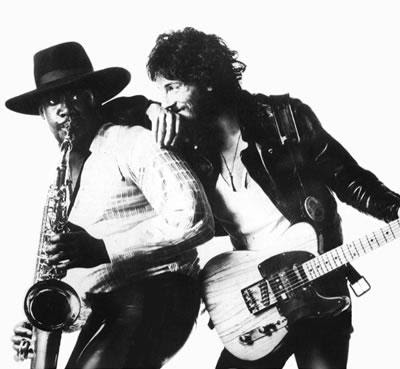
Bruce Springsteen: Tenth Avenue Freeze Out
[purchase]
Rock and roll should be fun. Bruce Springsteen used to be a lot of fun. This song is a perfect example. It makes you feel good to listen to it. Very exuberant and peppy.
It's also a great example of horn-driven rock. And it's not only Clarence Clemons doing the driving in this one. Mainly it's the brass riff. To my ears it sounds great.
Posted by Paul at 9:23 PM View Comments
Labels: Bruce Springsteen, Horns
Horns: Got To Get You Into My Life

The Beatles: Got To Get You Into My Life
[purchase]
Earth Wind & Fire: Got To Get You Into My Life
[purchase]
Bloggers don't usually bother prattling on about The Beatles; there seems to be an unspoken assumption in modern culture that the larger-than-life phenomenon of the Beatles as icons somehow contains their history, making any discourse moot. And it is true, I suppose, that the Beatles' use of horns is so culturally recognizable, it's practically memetic; I'm sure I'm not the only one who grew up believing that the French stole the first few bars of All You Need Is Love for their national anthem.
But before the brassband sound of 1967's Sgt. Pepper and its horn-carrying cover, or the faux-military capriciousness of the psychedelic, love-happy 1969 Yellow Submarine, came the sunshiny britpop of 1966 masterpiece Revolver, and it is here, in the underrated Got To Get You Into My Life, we find Beatles' first use of horns -- in truth, a better harbinger of the anthemic, almost carnivalesque sound of Sgt. Pepper than the animated nonsense of a brightly lit underwater world which would follow, though GTGYIML didn't chart until 1976, a full decade after its original release, when it was re-cast as a single with Helter Skelter on the B-side.
The song takes on a darker foreshadowing, too, revealing the kernels of later, deeper Beatles songs, if you accept the underground explanation, later confirmed in Paul's 1998 bio, that he wrote this one about his desire to smoke marijuana, rather than about, say, a girl.
Meanwhile, where the original song's use of brass provides a blare of orchestral sound right from the starting block, thus framing the Beatles' paean to reefer with a swinging pace, Earth Wind & Fire adopt a totally different approach for their take on the song for 1977 movie Sgt. Pepper's Lonely Hearts Club Band. Here, the electric fuzz of funk takes the intro, while the horn section takes a more Disco-era turn as a form of rhythmic flair more typically found in elevators than anywhere else these days. Take the two versions together, and despite the fact that they ultimately achieved their fame within a year from each other, you've got practically a textbook study in contrast between two musical genres, and their respective use of brass.
Posted by boyhowdy at 9:21 PM View Comments
Labels: Earth Wind and Fire, Horns, The Beatles
Horns: If I Can't Have You
Etta James & Harvey Fuqua: If I Can't Have You
[purchase]
I've been scarce from SMM for the last couple of weeks (and probably will continue to be for the rest of the month), but I couldn't let this week's theme go by without throwing this one up. "If I Can't Have You" is not only my favorite Etta James song, it's among my favorite songs by anyone, ever. This song makes you happy, makes you dopey, makes you want to go up to your woman and give her a kiss or a pinch. And the sax that comes in during the chorus makes you want to do it in the most lascivious way possible: shoulders rollin', legs struttin'.
Harvey Fuqua's delivery in particular really makes the song. Every time I hear this tune I imagine Bill Cosby lip syncing—"I just don't—I just don't—I just don't want to be bothered with nobody..."—this is like the song that never made it to one of those classic Cosby Show episodes where the family lip syncs an r&b classic.
Posted by Scott at 7:51 PM View Comments
Labels: Etta James, Horns




































